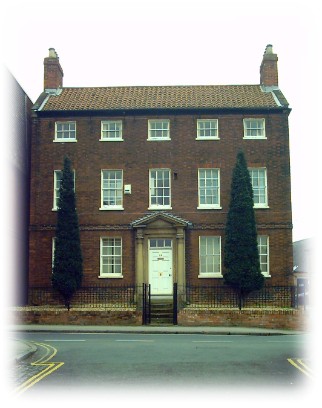William’s career as a Share Broker continued apace, with Slater’s 1855 Directory listing his business address as 2 Royal Bank Buildings. William was very successful; in actual fact, he was credited in his son Redmond’s obituary as having founded the Liverpool Stock Exchange. (9) Evidence of William’s increasing affluence can be found in the schools he was able to afford for his sons; He was able to send his five eldest to the prestigious (and Catholic) Stonyhurst College, at Clitheroe in Lancashire.

William's house in Newark, 23 Millgate
By the early 1860s William felt the need for a new challenge and he started looking for a business to invest in. James Waterworth was still priest in Newark and he may have been the catalyst for the decision to move to Nottinghamshire. The opportunity presented itself in 1862 and William bought the Great Northern Works on Beacon Hill and embarked on a new career. Engineering was his initial focus, making boilers, but William also turned his hand to mechanical innovation. In 1864 he and George Gell patented a machine that would clean “beans, wheat, grain, seeds or other substances such as plaster of Paris”.
It wasn’t all smooth going though. Following the disastrous boiler explosion in Norwich and subsequent court cases, William seriously considered selling up, but in the end he kept the business, changing direction and developing the plaster making side.
Very unusually for the mid-Victorian era, William also took his wife into his new business, and he also made her the sole executrix of his will. He also continued to play an active part in society, sitting on a committee to decide how Newark should celebrate the marriage of Edward, Prince of Wales in 1863.
The Cafferatas lived at 23 Millgate, and William’s record in the 1871 census described him as “manufacturer of Plaster, Gypsum, Terra Alba, Brick and Tiles, etc. and miner of Gypsum, etc., employing 158 men, landowner and farmer 125 acres.” (10)
It was at his home in Millgate that William died on 5th
September
William and Elizabeth Cafferata's grave in Newark Cemetery
1874 with the Newark Herald reporting the cause
of death as “paralysis”.(11) He was
buried in Newark Cemetery.